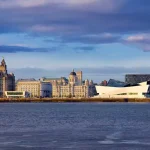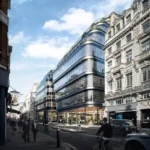Littlewoods Building, Liverpool Art Deco Building, Architects, Design
Littlewoods Building, Liverpool
Art Deco Development, north west England, UK – Architecture
18 Dec 2012
Littlewoods Building Liverpool
Art Deco Building in north west England
HAPPY CHRISTMAS TIDINGS FROM SAVE – LIVERPOOL’S LITTLEWOODS IS SAVED!
Architectural charity SAVE Britain’s Heritage welcomes new plans to save Liverpool’s most prominent Art Deco landmark, the huge white Littlewoods building that dominates the city’s eastern approach.
Built in 1938 for Littlewoods’ famous football pools, the tall central clock tower and streamlined concrete profile are visib le far across Liverpool. The building housed the giant printing presses that sent millions of pools coupons across the country every week, to player s dreaming of winning a golden ticket.
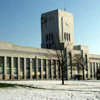
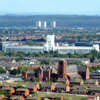
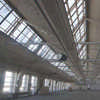
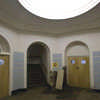
photos from SAVE Britain’s Heritage
The National Lottery superseded the football pools, and the building has lain derelict for over a decade. English Heritage refused an application to list the structure and two redevelopment schemes have fallen victim to the recession. Earlier this year, local press reports warned that demolition was becoming increasingly likely as the structure fell into decline .
SAVE responded by drawing national media and ministerial attention to the building’s importance , owned by the Homes and Communities Agency. SAVE P resident Marcus Binney accu sed N ational Regeneration A gencies of indifference to the building’s demonstrable architectural and historic significance.
T he building was seen by sev eral million viewers when SAVE Deputy D irector Rhiannon Wicks appeared on the Alan Titchmarsh show in S eptember with Dan Snow, to highlight its plight .
Now Manchester based developers Capital & Centric Plc have announced their intention s to buy the building . They are submit ting a planning application to Liverpool City Council to convert it into a hotel wi th commercial space.
The new proposal, drawn up by Shedkm Architects , would see £16 million of private sector money invested in the refurbishment project , which could start on site summer 2013 . The project is thought to have won financial support from the mayoral City Deal fund. SAVE salutes the Mayor’s positive achievement in working with national government and the private sector in response to public opinion to secure the future of this important building.
SAVE President Marcus Binney says: “It was the fierce opposition to the demolition of the Art Nouveau Firestone factory in London over a bank holiday weekend in 1980 which prompted the first listing of the great factories of the 1920s and 30s. Littlewoods is a spectacular example of the architecture o f this golden era and doubly impressive for its enormous size. Liverpool has been a pioneer in the restoration of great landmarks of this date, notably with the handsome conversion of Speke Airport and its pair of matching hangars. It is excellent that Lit tlewoods is to join them and funds are being earmarked for the work.
SAVE Deputy Director Rhiannon Wicks says: “It is wonderful news that the Littlewoods building, a great Art Deco palace and a Liverpool icon, is to be saved and revived for a new use. As well as being architecturally impressive, the building has a place in the hearts of the people of Liverpool for being the home of the football pools. This rescue story goes to show what can be done when imagination is applied by enlightened developers.
The Littlewoods Building was completed in 1938, probably by Scottish Architect Gerald de Courcey Fraser, who also designed a number of fine department stores for Lewis’s and others.
The South Lancashire ‘Pevsner’ guide describes it as being ‘in the same vein as the celebrated factories on the Great West Road in London… outdazzling any of the buildings put up on the contemporary industrial estates’.
Sir John Moores, and his brother Cecil, built Littlewoods into the country’s largest family owned business empire, covering department chain stores and catalogue shopping, bequeathing a dynasty estimated at over £1bn.
From working class Salford stock, the Moores family was renowned as ge nerous benefactors associated with fam ous local and national causes.
Liverpool John Moores University was renamed in his honour, and the Moores family controlled both Everton and Liverpool Football clubs during their 1970 and 80s glory years – Littlewoods actually sponsored the League cup for several years between 1986 and 1990.
The Littlewoods building’s vast, well lit internal spaces were enlisted in the national interest during WWII. At the outbreak of the war the building’s mighty printing presses wer e used to print 17 million National Registration forms in just three days. The floors of Halifax Bombers were assembled at the building, and it was also the nerve centre of MC5, the government agency that intercepted mail to break enemy codes.
Bomb shelte rs in the basement areas still contain artwork and graffiti on the walls dating from the 1941 Wartime Blitz and ‘Battle of the Atlantic’, when parts of Liverpool, its rail yards and docklands suffered more bombs per square mil e than even London’s East End.
Littlewoods Building images / information from SAVE Britain’s Heritage
Address: Littlewoods Building, Edge Lane, Liverpool, L7 9LH, UK
Architecture in Liverpool
Liverpool Architecture Designs – chronological list
Lime Street Gateway : Glenn Howells Architects
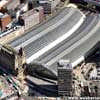
photo © webbaviation
Liverpool Waterfront : Chapman Taylor Architects
Liverpool ONE masterplan + buildings
Comments / photos for the Liverpool Littlewoods Building page welcome


